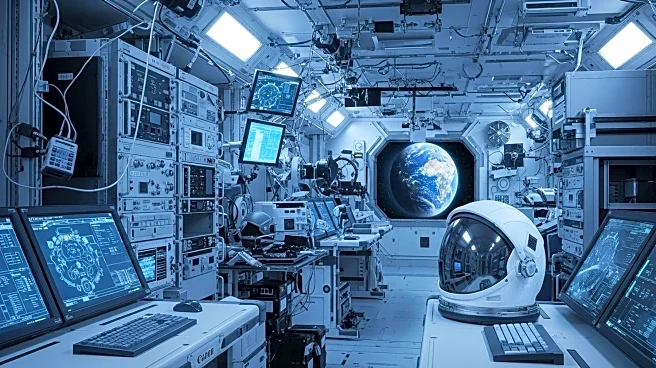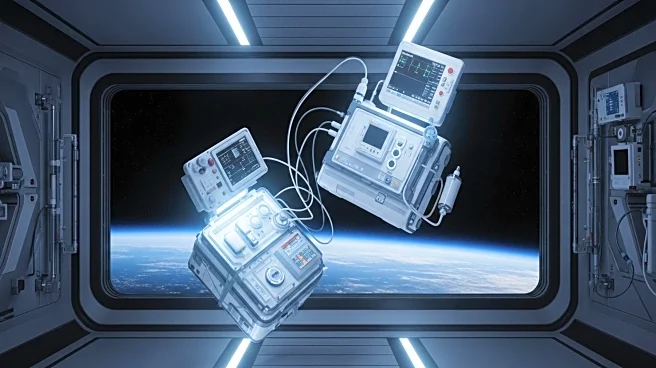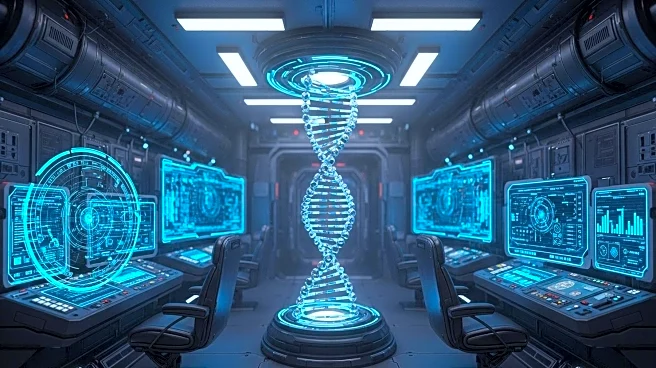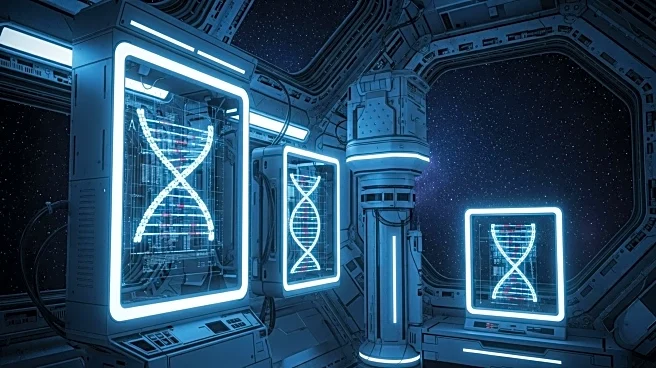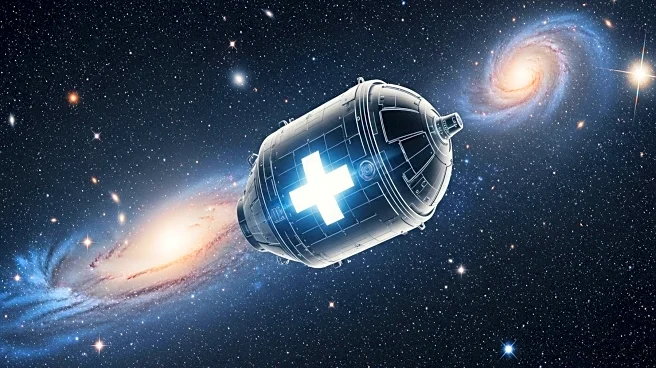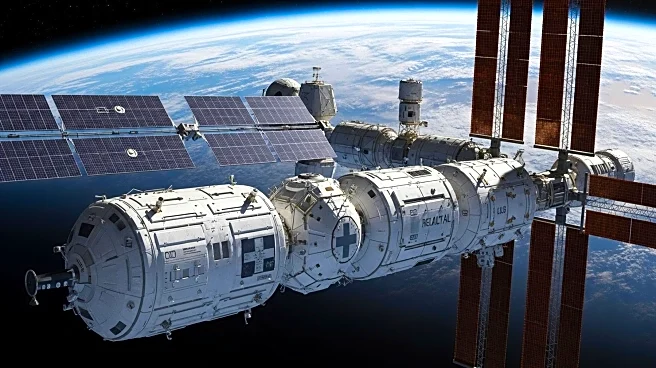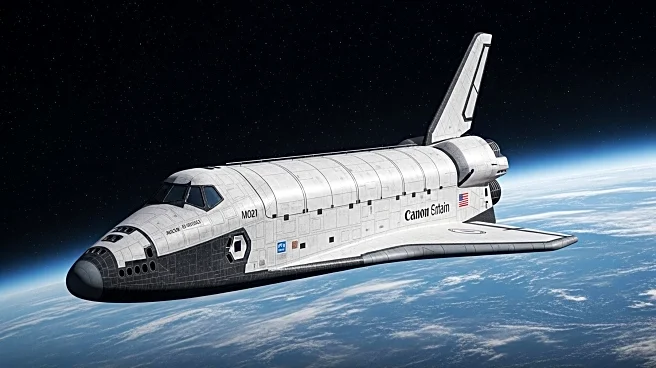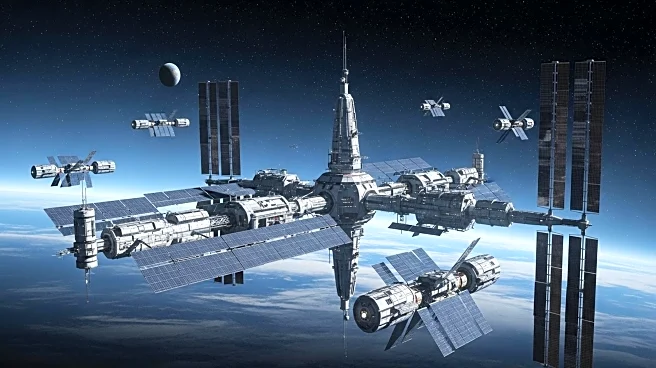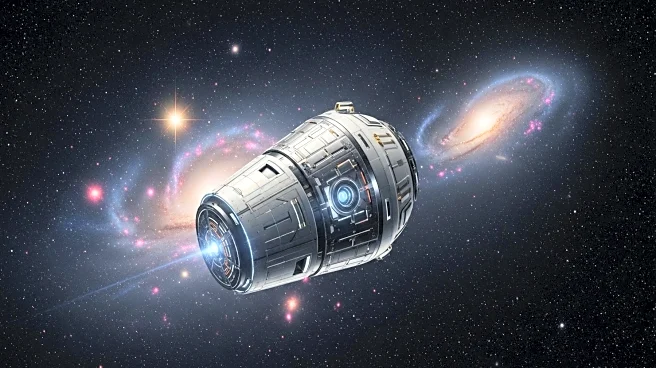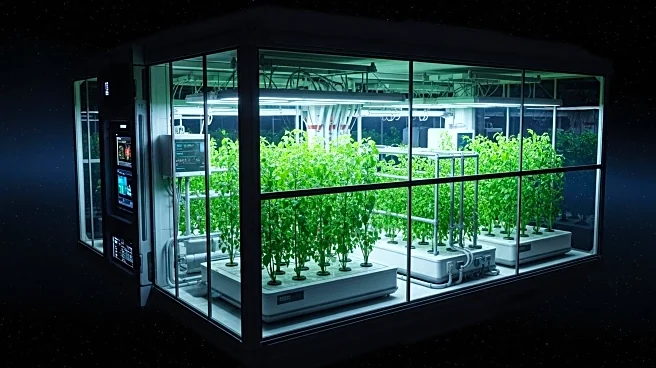What is the story about?
What's Happening?
The International Space Station's Expedition 73 crew, consisting of seven members from NASA, Roscosmos, and JAXA, is actively engaged in scientific research and station maintenance. The crew includes Commander Sergey Ryzhikov, cosmonauts Alexey Zubritsky and Oleg Platonov, and NASA astronauts Jonny Kim, Zena Cardman, and Mike Fincke, along with JAXA's Kimiya Yui. Recent activities include unloading supplies from the NG-23 Cygnus cargo vehicle and installing a cubesat on the NanoRacks platform. The crew also participated in vestibular function research using virtual reality technology and DNA sequencing studies aimed at improving data storage for long-duration space missions. Additionally, the crew welcomed NASA's new class of astronaut candidates, known as 'ascans', who will undergo two years of training before becoming eligible for flight assignments.
Why It's Important?
The ongoing research and activities aboard the International Space Station are crucial for advancing scientific knowledge and technology necessary for future space exploration missions. The vestibular function study and DNA sequencing research have implications for long-duration missions, potentially aiding in the development of more efficient data storage methods and understanding human physiological responses in microgravity. The introduction of new astronaut candidates signifies NASA's commitment to expanding its human spaceflight capabilities, which is essential for maintaining U.S. leadership in space exploration. These developments contribute to the broader goals of international collaboration and innovation in space science.
What's Next?
The Expedition 73 crew will continue their scientific research and maintenance activities aboard the space station. The new astronaut candidates will begin their training, preparing them for future missions. As the space station remains a hub for international cooperation, further advancements in research and technology are expected, supporting NASA's long-term objectives for lunar and Mars exploration. The successful integration of new technologies and astronaut training will be pivotal in achieving these goals.
Beyond the Headlines
The research conducted on the space station not only advances scientific understanding but also has potential applications on Earth, such as improving data storage technologies and understanding human health in extreme environments. The collaboration between international space agencies highlights the importance of global partnerships in addressing complex challenges in space exploration. As new astronaut candidates join the ranks, the diversity and expertise they bring will enrich the Astronaut Corps, fostering innovation and progress in human spaceflight.
AI Generated Content
Do you find this article useful?
